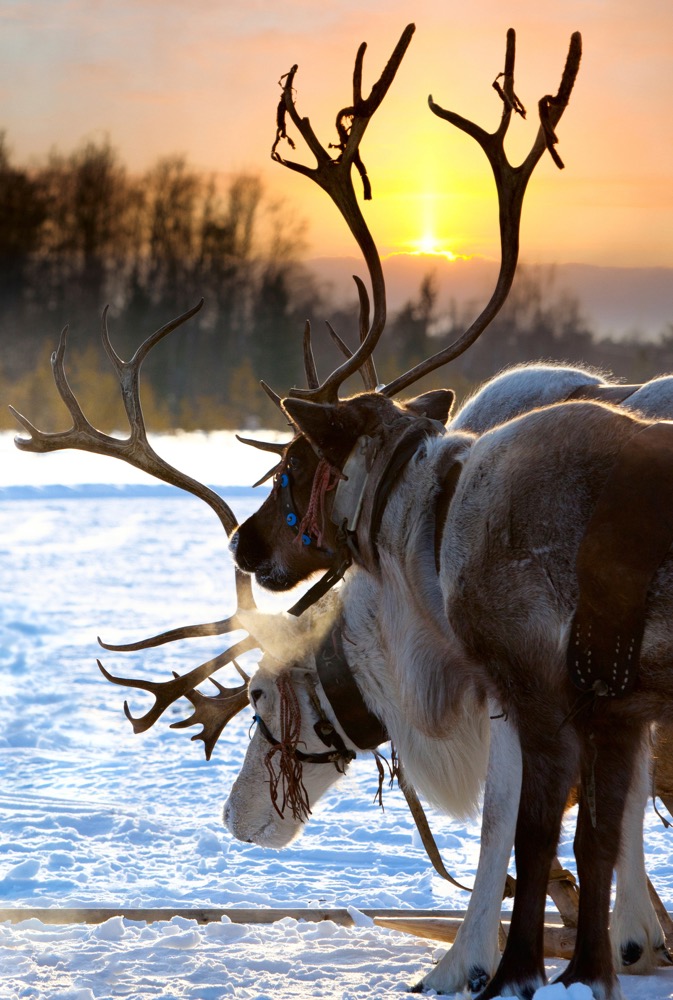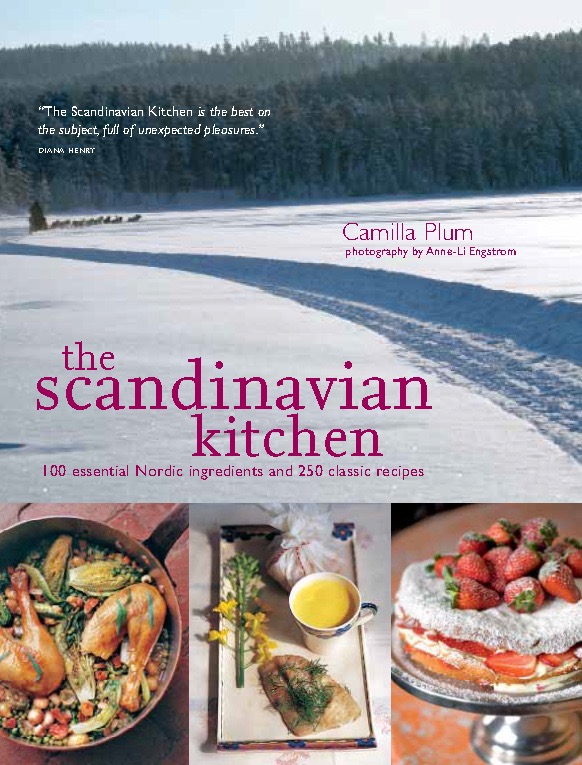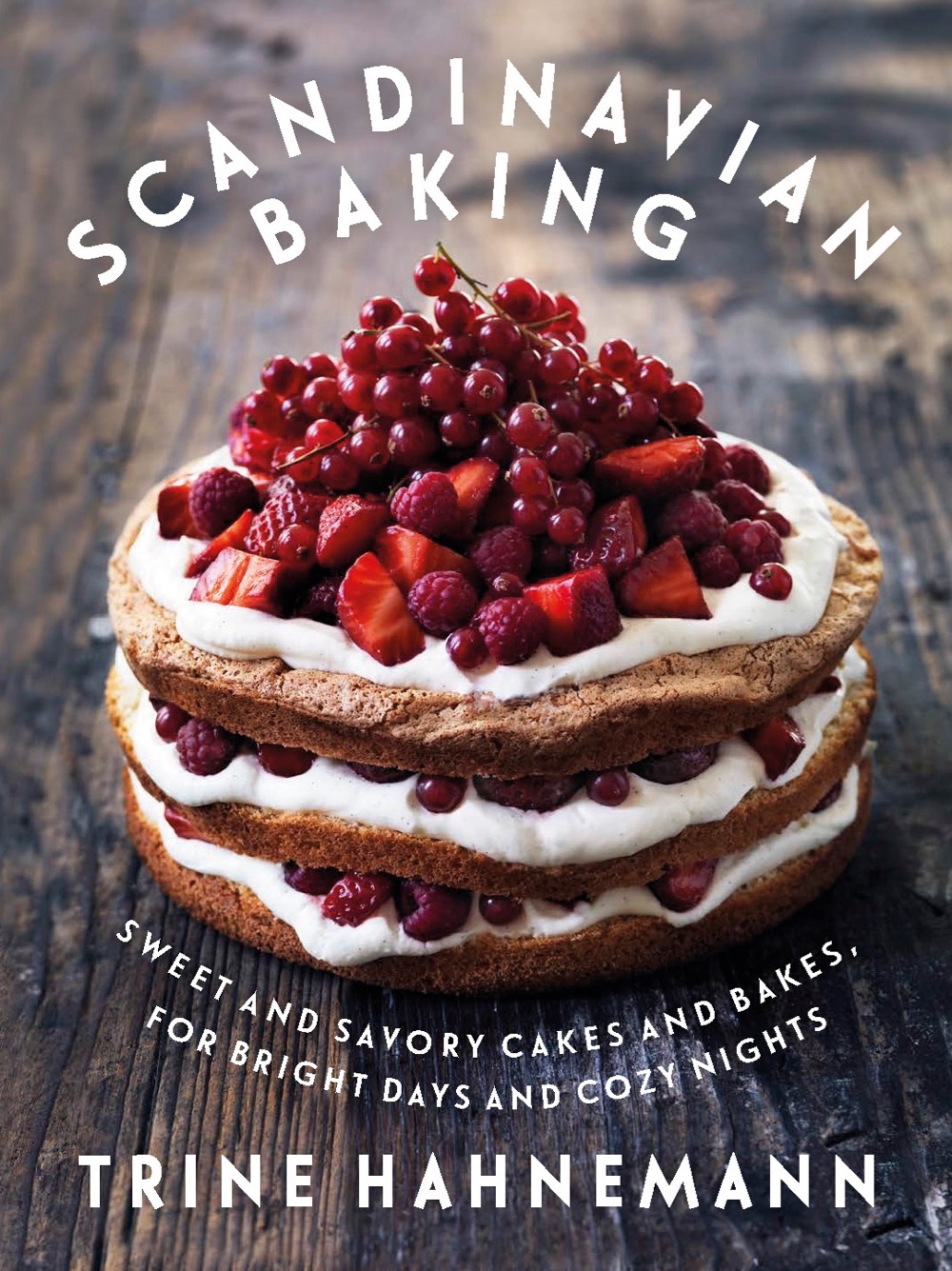Scandinavian Cuisine For The City Cook
I've thought it rather unexpected that Nordic food had become the new "it" cuisine. After all, many of its defining ingredients -- pickled herring, wild boar, elderberry, nettles and salsify, dill and horseradish -- aren't exactly what come to mind if we're asked about our collective cravings. But Noma, Denmark's break-out restaurant, took Ferran Adrià's El Bulli's place as the world's most influential kitchen (Noma has announced it will close on New Year's Eve, move for a while to Australia, and then re-open in 2016 in Copenhagen as part of an urban farm). While much of this cuisine is not yet well known beyond lingonberry jam and Swedish meatballs, that is about to change because early next year a 100-seat Icelandic restaurant and a Nordic food hall will both open in New York's Grand Central Station.
What's the appeal? And are these flavors and cooking traditions ones that we can bring into our urban kitchens?
First, some nomenclature. Nordic generally refers to the five countries of Denmark, Finland, Norway, Iceland, and Sweden, plus Greenland, the Faroe Islands, and Åland. Scandinavia is an historic and cultural term used in reference to Norway, Denmark and Sweden. For culinary purposes, it seems to me that both terms get rather loosely used to describe foods that share common ingredients, many grown during the region's long summer days and eaten during its long winter nights. The term Scandinavian is also used to describe a type of interior design, furnishings, and style, distinctive for its spare lines and minimalism, characteristics shared with much of its food. Think Dansk, Marimekko, Georg Jensen and Ikea.
For the sake of exploring the region's food, I'm going to use both terms -- Nordic and Scandinavian -- rather interchangeably because the differences are, to my thinking, more geo-political than cultural and besides, I am a home cook and not an anthropologist.
The Nordic Manifesto
In 2003, the two chefs who opened Noma, Claus Meyer and René Redzepi, organized a symposium for leading Scandinavian chefs, out of which came a "manifesto for a new Nordic diet." Two years later this declaration was adopted by the Nordic Council of Ministers, an official inter-governmental body with representatives from eight countries, as the basis of the "New Nordic Food Program." This moved these principles beyond restaurant chefs to serve also as guidelines and inspirations for small and large-scale food producers and individual consumers and home cooks.
The manifesto states that the New Nordic Diet must:
- Express the purity, freshness and simplicity that we associate with our region
- Reflect the changing of the seasons in the meals
- Be based on ingredients that are particularly excellent in our climate, landscapes and waters
- Combine palatability with modern knowledge about health and well-being
- Promote the diversity of Nordic products and producers and increase awareness of the underlying cultures
- Promote animal well-being and sustainable production in the seas and in cultivated and wild landscapes
- Develop new uses of traditional Nordic foods
- Combine the best Nordic methods of food preparation and culinary traditions with impulses from other regions
- Combine local self-sufficiency with the regional exchange of high-quality produce
- Invite consumers, other food producers, agriculture, fishing, small and large food industries, retailers and wholesalers, researchers, educators, politicians and the authorities to become partners in a joint project for the benefit and joy of the entire Nordic region.
Certainly nothing like this will be endorsed in the U.S. since it would be labeled socialism or worse (even calling it a "manifesto" is too radical a label), but to me, these are such healthy and common sense and good-for-business principles. I mean, come on -- it's advocating for "joy." In any case, this manifesto captures much of what makes Nordic food so appealing and it also helped advance the Noma phenomenon, which in turn finally put Scandinavian cuisine on a world stage.
The Flavors of Scandinavian Cuisine
I don't know how you say terroir in Finnish, but Nordic ingredients exemplify it. Northern Europe's light-filled summer nights mean fruits and vegetables can grow slowly and develop fuller nutrients and flavors. It's one of the reasons why it's said that the health benefits of the Nordic diet rival those of the Mediterranean way of eating.
The region's many bountiful cooperative dairies introduced milk, cream, and cheese into the cooking, along with what are world-famous cheeses like the distinctively brown Myseost (primarily from Norway), Jarlsberg (Norway), Blue (Denmark), and Västerbottenost (Sweden). This bounty of milk has also led to the popularity of sour milk products, such as yogurt and crème fraiche-like creams used in salad dressings and desserts.
Seafood caught from the frigid north Atlantic waters that surround the jagged coastlines of these countries is abundant, making these cuisines very fish and shellfish-centric. One of your first experiences with Scandinavian food might have been a smörgåsbord with open-faced shrimp sandwiches, but this is barely a hint of how the sea feeds the Nordic diet. And with such variety! Fish is baked whole, fried, grilled, or cured, caught at sea or bought at dockside or fished mid-winter from a hole cut in an iced-over lake. It's refined into quenelles and rissoles, cured into gravlax, or served with any number of flavorful sauces.
The Nordic diet also includes meat, poultry, game and offal, plus sausages and meatballs. Swedish meatballs may seem like an Ikea punch line, but in fact they are as defining and cook-specific a Scandinavian dish as an Italian red sauce. There are types of wild game and fowl rarely found in America, such as elk and wild boar. Again, all this is a display of terroir -- the cuisine has developed around what was available, bountiful, local, flavorful, and healthy.
Still, vegetables are not the centerpiece of Scandinavian cooking. The climate, no doubt, is the reason why, and it's not surprising that winter vegetables like cabbage, beets, kale, and Brussels sprouts, plus easy-to-grow asparagus (including white asparagus which is grown without sunshine) are among the mainstays. Such vegetables became a kind of cucina povera -- the foods eaten by those who couldn't afford to buy fish and meats -- and out of this came such Nordic signature dishes like red cabbage salad with caraway seeds and pickled beets.
A distinctive part of Nordic cuisine is its culture of foraging -- for mushrooms and wild garlic and early spring herbs that are the first signs of spring after the long, dark, snow-covered winters. Come spring, the landscapes also begin to produce glorious fruits and berries, which have had a defining influence. Apples grow with thin skins because the sun is not so harsh; cherries and berries like lingonberries and gooseberries and elderberries are bountiful, harvested to be cooked fresh and also turned into preserves to enjoy year-round.
Because of northern Europe's long winters, food preservation was always essential. Today it is not just a way to eat off-season but it is also core to Nordic flavors. Herring, which author and organic farmer Camilla Plum has said is "the backbone of Scandinavian fish cuisine" (more on Ms. Plum in a moment), plus other fishes are salted, smoked, cured, and pickled. Fruits and vegetables are also dried or pickled or turned into jams.
Finally there are the distinctively Scandinavian breads and grains, especially rye, wheat, and oats that are grown more easily in northern Europe's chilly and low-sun climates. Hearty Nordic breads, once baked in communal ovens, or the more simple flat breads that were baked on stones or on upturned pans at home, have robust flavors and stand up well against the region's salted fish and other strong tastes.
If you want to see the range of Scandinavian flavors and textures, here is a link to a collection of 37 recipes that accompanied an article that appeared in the June 2015 issue of Saveur in which the magazine wrote how the region's cuisine tells the story of the Northern European landscape.
Bringing Nordic Flavors Into A City Kitchen
The first time I cooked anything that was self-consciously Scandinavian was when I used a technique for cooking fish with rye flour I learned from a superb book by Trine Hahnemann published in 2009 called The Scandinavian Cookbook. I'd always struggled with cooking fragile fishes like sole or flounder but Ms. Hahnemann shared a simple method of dusting a fillet with dark rye flour and then quick-sautéing it in a little butter -- the flour helps hold the fish together and the rye adds a very subtle tang. It's foolproof and since learning this trick, I've always kept a bag of dark rye flour (I buy Bob's Red Mill) in my freezer.
Here is the recipe, adapted from The Scandinavian Cookbook:
Pan-Fried Flounder With Potatoes In Parsley (serves 4)
1 3/4 pounds fingerling potatoes
Salt and pepper
4 whole flounder fillets
1 cup rye flour
6 tablespoons unsalted butter
2 tablespoons extra virgin olive oil; 1 to 2 tablespoons more if cooking in two batches
1/4 cup minced fresh parsley
1 lemon, cut into small wedges
- Boil the potatoes in a large pot of salted water until tender, then drain. Once cool enough to handle, peel and then hold aside, keeping them warm in a 200°F oven while you cook the fish.
- Add a generous pinch of salt and several grinds of pepper to the flour and stir to combine with a fork.
- Rinse the fish in cold water and shake off any water droplets. Coat each fish fillet on both sides with flour. Carefully shake off any excess.
- In a large skillet, add the olive oil and 2 tablespoons of the butter and place over medium high heat. When the butter has melted, add the fillets and pan-fry for 4 to 5 minutes per side or until crisp and golden. Do not crowd the fish and cook in two batches if necessary, adding a bit more olive oil to the second if necessary; keep the first batch warm in a 200°F oven while you cook the rest.
- Melt the remaining butter (3 or 4 tablespoons, to your preference) in a warm serving dish. Add the potatoes and toss to coat. Sprinkle the parsley and gently combine.
- Serve the fish with the buttered potatoes and lemon wedges.
The Scandinavian Kitchen by Camilla Plum
There is much about this cuisine that I've found appealing and so when I wanted to learn more about how to add these flavors to my kitchen, I turned to Camilla Plum's new book, The Scandinavian Kitchen. Her organic farm is called Fuglebjerggaard, located 20 miles north of Copenhagen.
The Scandinavian Kitchen: Over 100 Essential Ingredients With 250 Authentic Recipes (Kyle Books, ©2015, paperback, color photography, 272 pages, $22.95) is an outstanding resource because it is not just a collection of recipes but also a primer on Nordic cooking -- much of what I've learned about the foods I learned from her. Some of its ingredients you'll never find in a U.S. grocer, but you should know about them nonetheless to understand these flavors.
If you are interested in knowing more about this healthy, flavorful, versatile and often easy-to-cook cuisine, Ms. Plum is a superb teacher. What I love about her book is that it is organized by ingredients, with cooking tips, enlightening anecdotes, useful and evocative photos, and 250 recipes added throughout. Here's how it's organized:
Eggs and Dairy
Fresh Fish and Shellfish
Preserved Fish
Poultry, Meat Game and Offal
Vegetables
Mushrooms
Herbs
Fruit
Berries
Breads and Grains
Festive Food
This table of contents alone tells the Nordic gastronomical story. But get this book not just to get acquainted with these flavors but also for the story of tradition and culture and to understand a great cuisine that has long been overshadowed by others elsewhere. I also love how it is written from the perspective of a home cook who has culinary and agricultural expertise and also feeds her family every day.
I've already tried Ms. Plum's method for cooking cod by wrapping it in thin slices of bacon and roasting it until the bacon crisps. It's such a simple a way to add flavor and interest to a fish that can be so otherwise bland. A friend has promised me a venison roast from the most recent upstate New York herd-thinning season and I'm going to let Ms. Plum's recipes guide me on how to cook it. I don't have the courage to forage for mushrooms, so I'll skip that, but the chapter on breads has inspired me to finally take on whole grain (I'll do rye bread) including a sourdough-like starter.
We've been given permission to share two recipes from the book. Jansson's Temptation, a classic Swedish dish of potatoes, onions, cream and fish, and a traditional Christmas dish of Crisp Pork Slices With Caramelized Onions and Apples. See our links for the recipes.
Scandinavian Baking by Trine Hahnemann
Ms. Plum's wonderful book includes some baking recipes, mostly breads and a few treats in the last chapter about holiday and festive cooking. But if you're interested in expanding even further your knowledge about Scandinavian sweet and savory baking, take a look at Scandinavian Baking: Sweet and Savory Cakes and Bakes, For Bright Days and Cozy Nights (Quadrille, Distributed by Chronicle Books, ©2015, hardcover, color photographs, 288 pages, $35.00) by Trine Hahnemann.
I just got my copy of this very handsome book and have not yet made any of its 100 recipes, but I have had so much success with Ms. Hahnemann's previous 2009 book, that I'm expecting it's just as inspiring and reliable. A Danish chef and food writer, she lives in Copenhagen and I love how she describes herself as having grown up in a Danish hippy commune. How can you not want to cook what she cooks?
Going back to Camilla Plum and the rich information and wisdom in her lovely volume, I appreciated something that she wrote in her introduction that really sums things up:
"Scandinavian cooking achieves a delicate balance between extravagance and the humble, producing a wealth of fine tastes, seasonal daily food, and more luxurious festive food."
Perhaps a rewarding new year's resolution might be to get acquainted with a new cuisine. Keeping with the season as we begin our winter, a gastronomical northern adventure might be just the thing.


